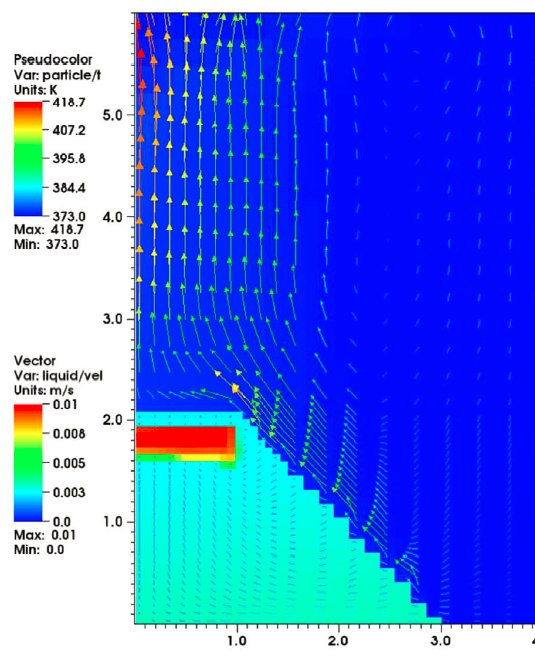Investigation of the debris bed coolability during severe accident
PhD student: Zheng Huang
During the progression of a postulated severe accident of a light water reactor (LWR), the molten core material as well as the interior structures will relocate either in the reactor vessel or in the cavity if the vessel is breached. Once contacting with the residual or injected coolant, the highly energetic core melt will fragment into small particles, consequently forming a porous debris bed after the sedimentation. The decay heat generated inside the debris bed must be removed continuously, otherwise the solid corium will melt again which may pose a threat to the containment integrity. Therefore, it is of paramount importance to investigate the coolability of the debris bed in order to stabilize and terminate the accident progression.
The present research mainly focuses on two aspects: 1) thermal hydraulics of the cooling and quenching process, and 2) the remelting behaviors, with the hope to obtain a deeper insight of the significant phenomena and develop an effective model as a module implemented in other computational tool.
Regarding the first aspect, various models of frictional forces and heat transfer are validated against the experimental measurements for the homogeneous/stratified debris bed with water flooded either from the top or the bottom. The impacts of various factors on the coolability are extensively studied, such as the porosity, the particles size, the bed height and shape, the downcomer, oxidation of Zr, propagation of the quench front etc. Not only the prediction of the dryout heat flux (DHF) is mainly concerned, but also the coolability of an initially dry bed quenched by water reflooding is assessed. Besides, some practical mitigation measures that favor the coolability are proposed, including the installation of a downcomer and forced injection of water from the cavity floor, and their performances are also evaluated.
As for the second aspect of the research topic, the main attention is paid to the investigation and simulation of the melting/solidification behaviors of the corium. Specifically the variation of the composition and physical properties corresponding to the phase diagram during the phase change are of a particular interest. A simplified numerical model is being developed and implemented in other system code.

Particles temperature and liquid fraction of a mound-shape debris bed